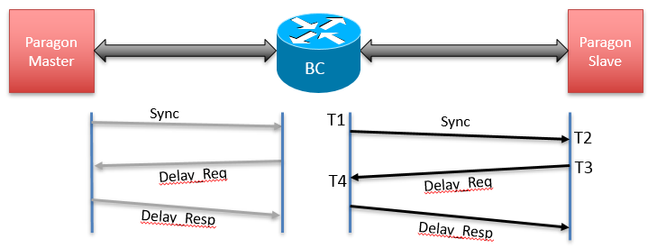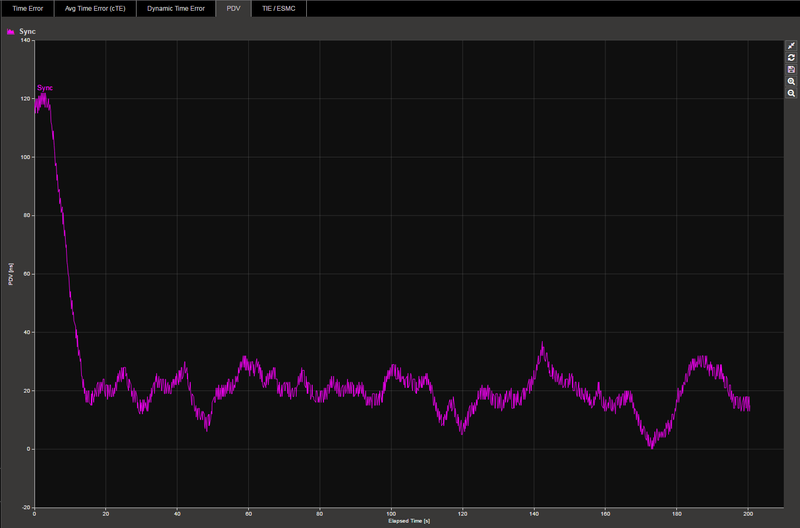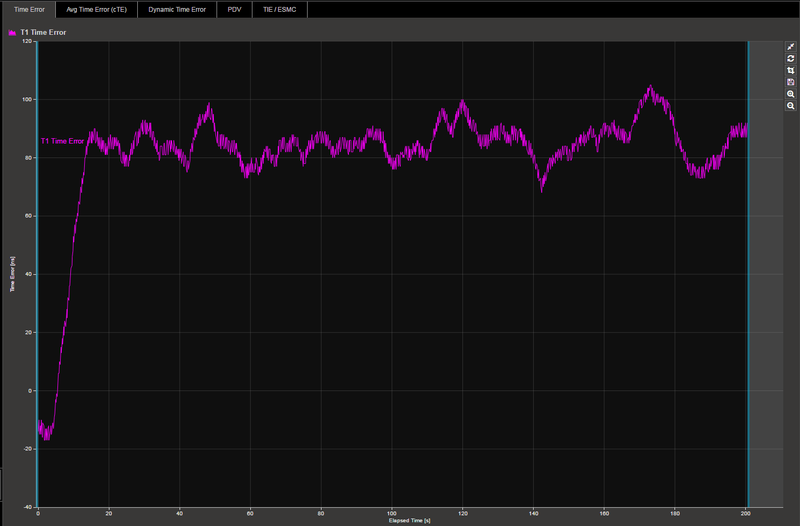
Time Error and PDV Calculations
How are Time Error and PDV calculated?
The calculations for PDV and Time Error are very similar. Both are based on packet timestamps. The diagram below shows the messages involved and the associated timestamps (using a BC as an example):

Correction Field, Follow-Ups and Cable Delays
In the calculations below:
- The correction field is not shown explicitly - it is considered to be part of the timestamp.
- Follow-Up messages are considered to be part of the Sync message transaction. For 2-step clocks the T1 timestamp is carried in the Follow-Up message but this is not shown explicitly here.
- Cable delays should also be taken into account but these are not shown here.
PDV
PDV is calculated in the forward direction using the timestamps carried in the Sync messages (T1) and in the reverse direction using the timestamps carried in Delay-Response messages (T4). T2 and T3 are the timestamps from the test equipment (Paragon, Sentinel). For each message transaction (i), the calculations are:
| Sync PDV | dfwd(i) = T2(i) - T1(i) |
|---|---|
| Delay Req PDV | drev(i) = T4(i) - T3(i) |
The PDV values above are then plotted against time. Since PDV is about delay variation, the PDV result is normalised to the lucky packet (the packet with the shortest delay).
Time Error
Time Error is calculated using the same timestamps as PDV. For each message transaction (i), the calculations are:
| T1 Time Error (T1TE) | TET1(i) = T1(i) - T2(i) |
|---|---|
| T4 Time Error (T4TE) | TET4(i) = T4(i) - T3(i) |
| 2Way Time Error (2WayTE) | TE2Way(i) = (TET1(i) + TET4(i)) / 2 |
The Time Error is then plotted against time.
Read the equations carefully
Time Error is calculated from Measured Time minus Reference Time. Since the test equipment provides the reference, the T2 and T3 timestamps are subtracted from T1 and T4 (the device under test is being measured).
Delays are a measure of how long a packet takes to get from one device to another. So, delay is calculated as Transmit Time minus Receive Time.
So, Sync PDV is calculated from (T2 - T1) but T1 Time Error from (T1 - T2)..
PDV Compared to Time Error
From the above, it follows that the Sync PDV graph will be inverted compared to the T1TE. In addition, PDV is normalised to the lucky packet and will always be positive. For example:
Sync PDV:

T1 Time Error:

The Delay-Req PDV will have the same shape as T4TE but Delay-Req is normalised to the lucky packet and will always be positive.
Related articles
-
Page:
-
Page:
-
Page:
-
Page:
-
Page:
On this page:
